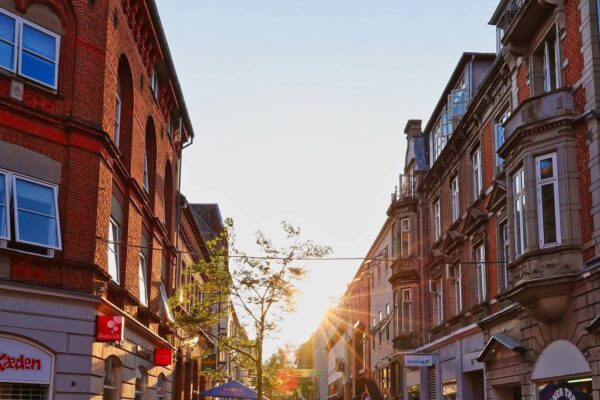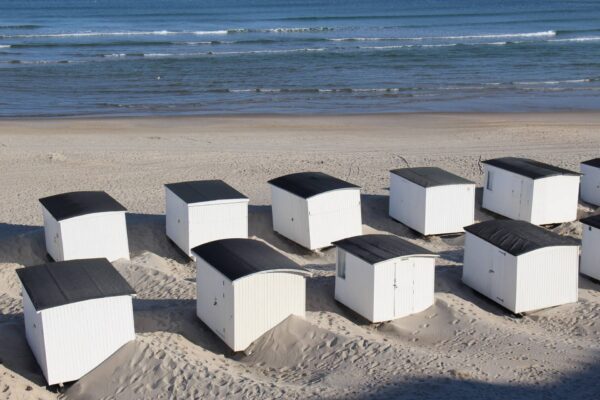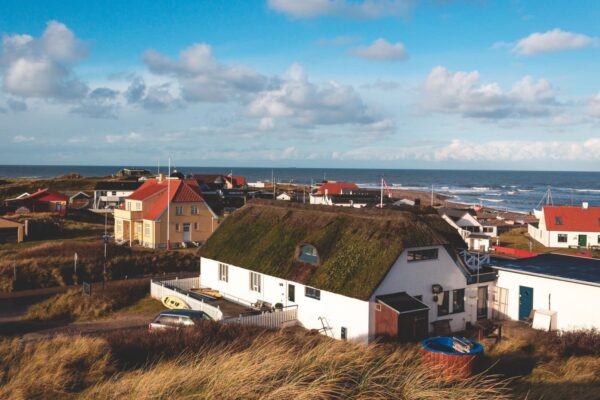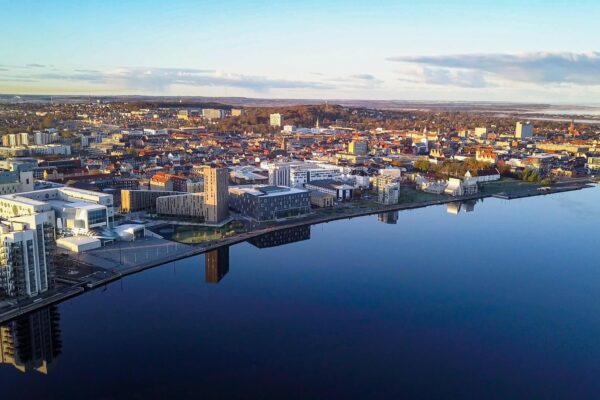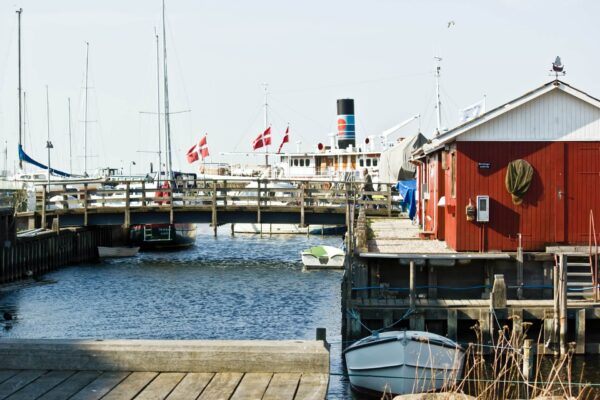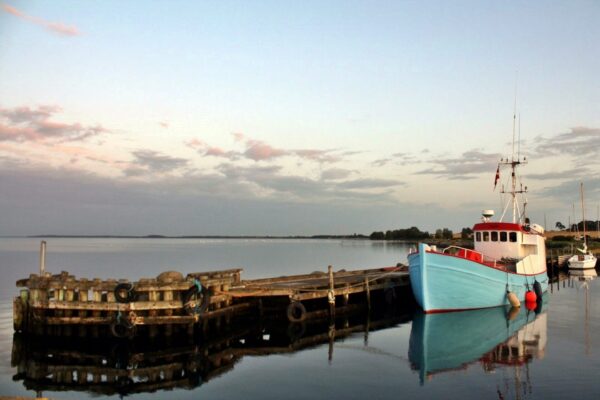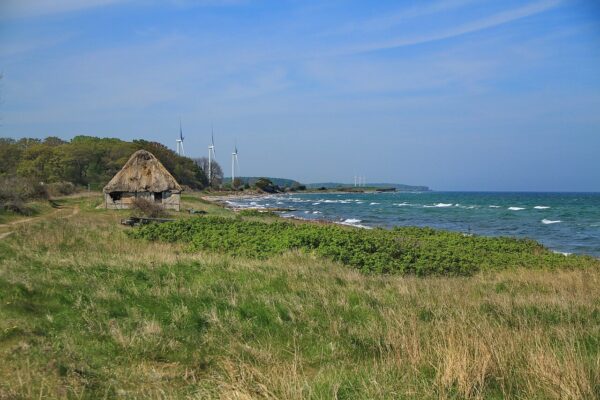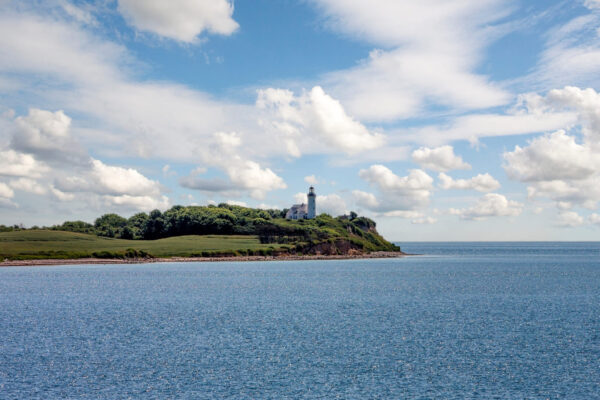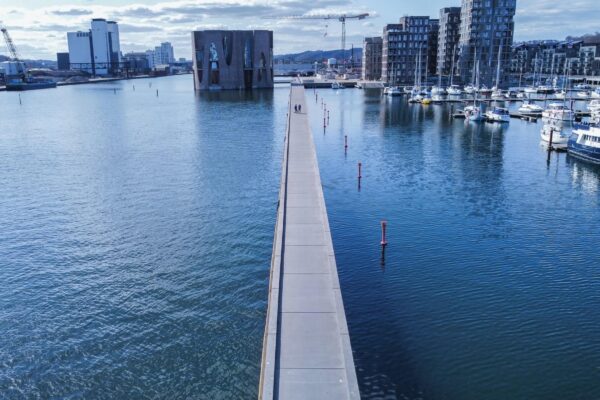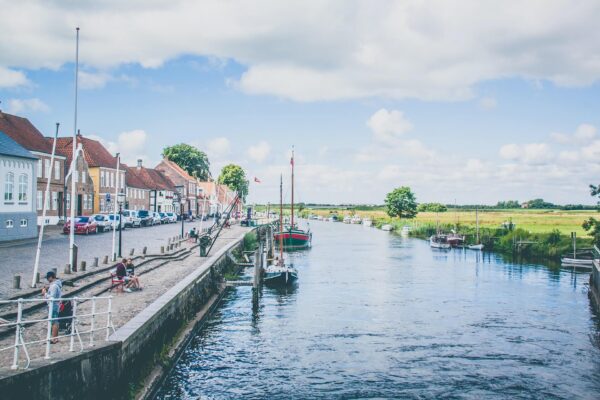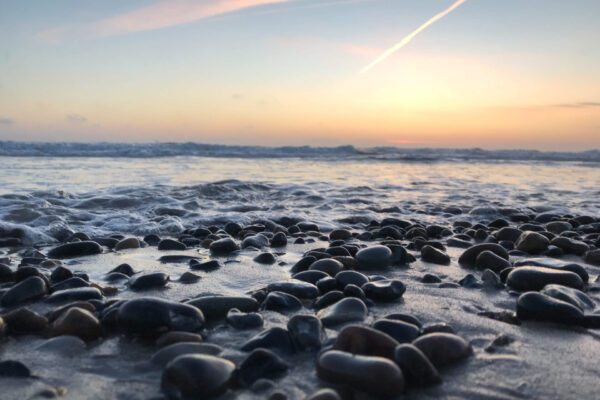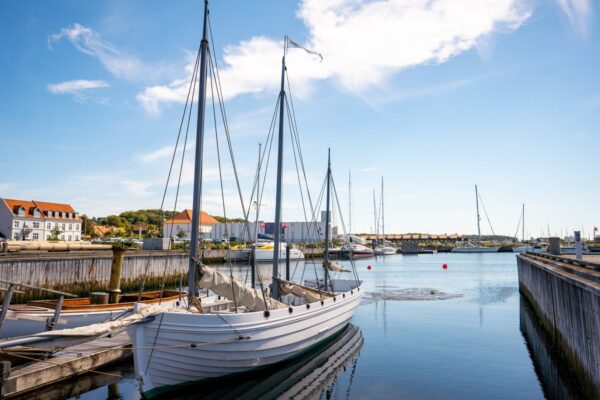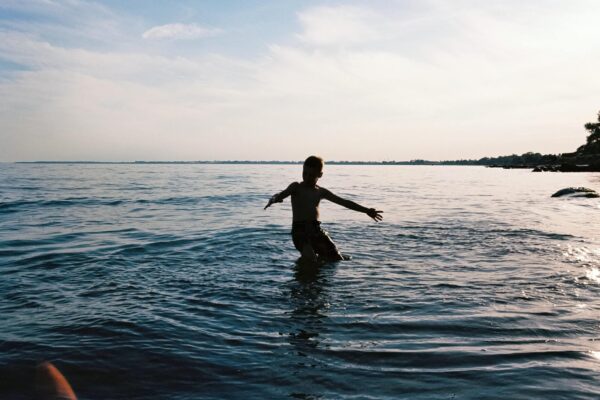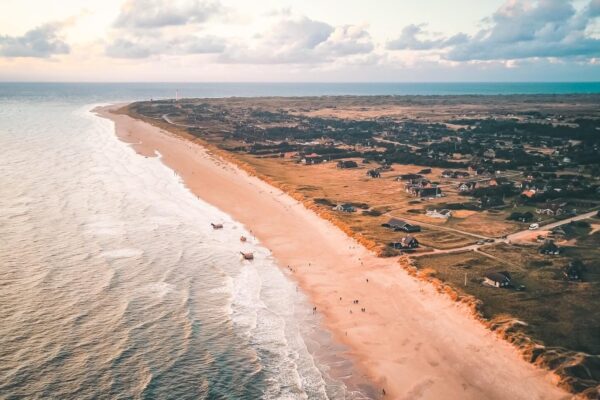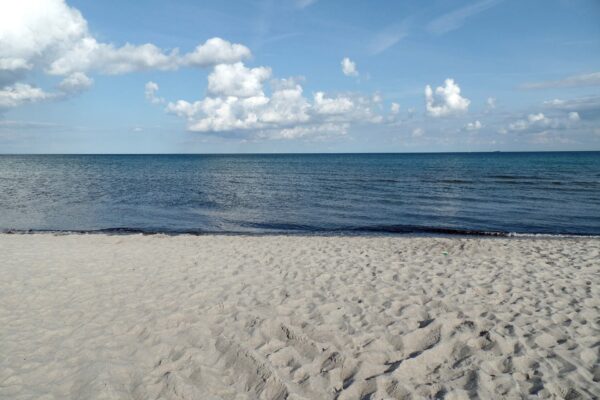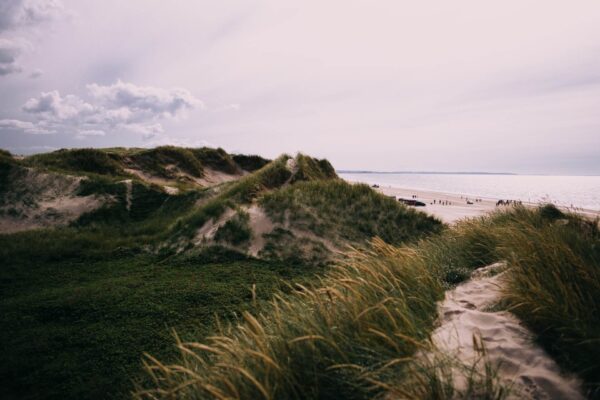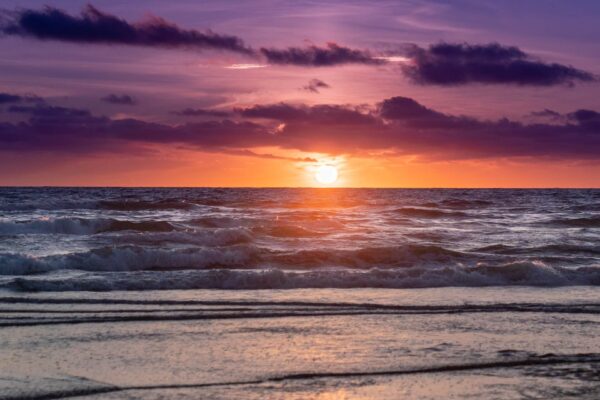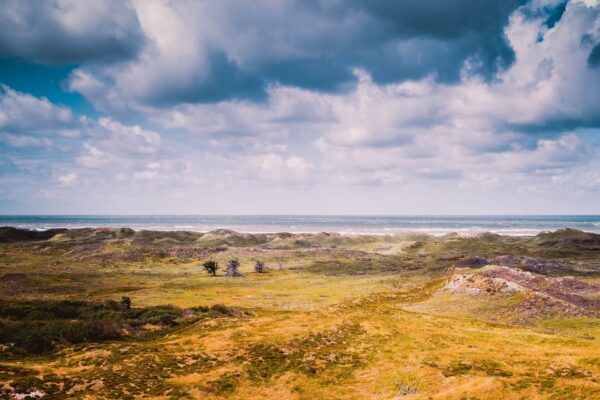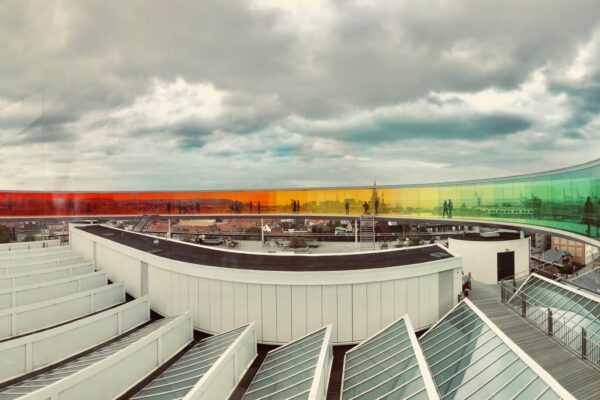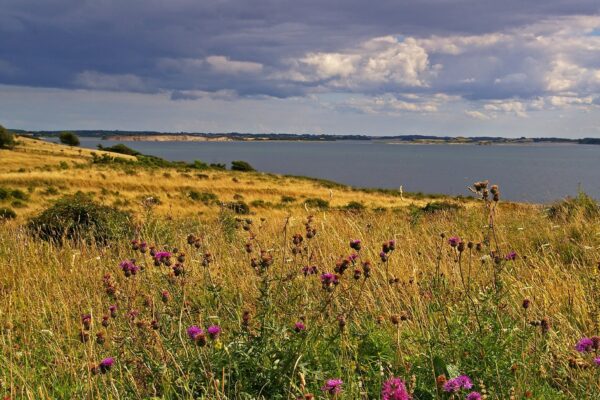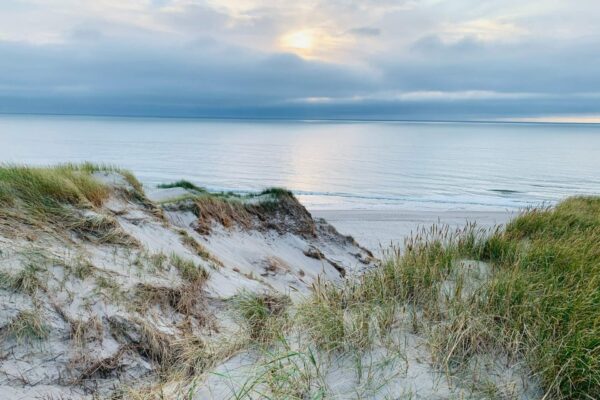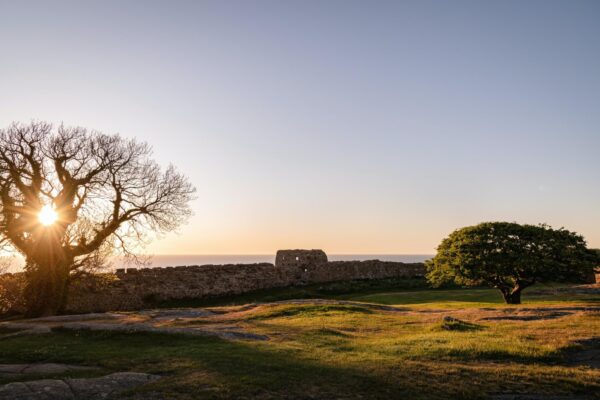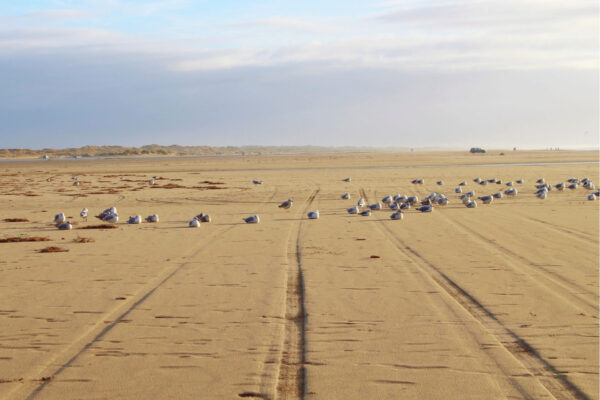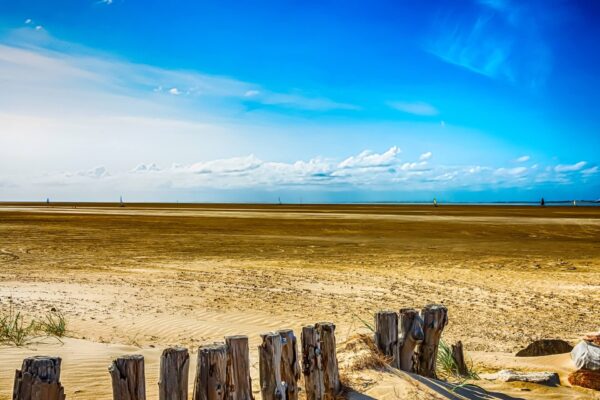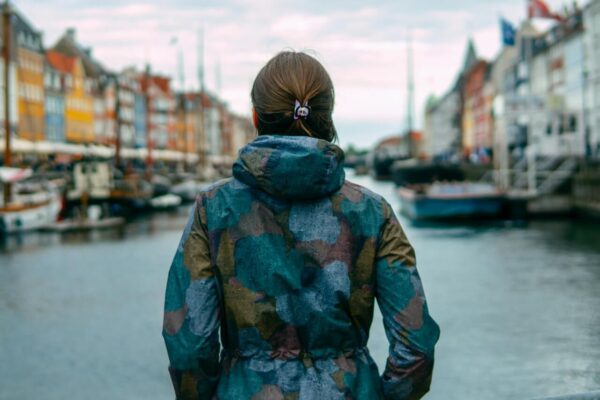Odense is the hometown of one of the most famous Danes of all time: Hans Christian Andersen – but that’s not the only reason why the city on the island of Funen has a fairytale atmosphere. The picturesque alleyways of the old town with their colourful houses and the carefully laid out green spaces contribute to the cosy atmosphere of the lively city as well. If you’re curious about Odense, you can find out everything you need to know about the city here.
Why holidays in Odense?
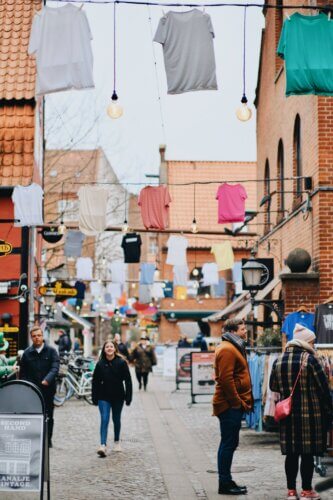
Odense is a large city with a lively, cosmopolitan and yet cosy flair. The idyllic capital of the island of Funen thrives on its culture and history, which can be felt almost everywhere, whether in museums, parks or the city centre.
Odense is best known as the hometown of Hans Christian Andersen, who was born here and got inspired to many of his stories. The Danish writer is still omnipresent today, for example in numerous sculptures and museums.
But it is not only the presence of the great storyteller that gives Odense its fairytale charm. You can lose yourself in the narrow cobbled streets and colourful little houses of the old town, as well as in numerous green spaces.
Where is Odense?
Odense is located in the centre of the Baltic Sea island of Funen, which lies directly to the west of the Danish mainland and is quickly and easily accessible for travellers from Germany. Funen is the third-largest island in Denmark and has excellent connections to the rest of the country thanks to its central location.
The capital Copenhagen is just over two hours’ drive from Odense, and the largest city on the Danish mainland, Aarhus, can also be reached by car in under two hours. Vejle, the centre of southern Denmark, is about an hour’s drive away. Some smaller islands, such as Ærø or Langeland, are also easily accessible from Odense and Funen.
Odense: weather
Odense has a typical island maritime climate, so you should always expect some wind. The summers and winters tend to be mild, with an average temperature of 20° Celsius in July and August, the warmest months. Therefore, the best time to visit the city is from May to September, but the city is of course worth a visit during the remaining months as well.
Odense: sights and activities
Hans Christian Andersen in Odense: museum and Co.
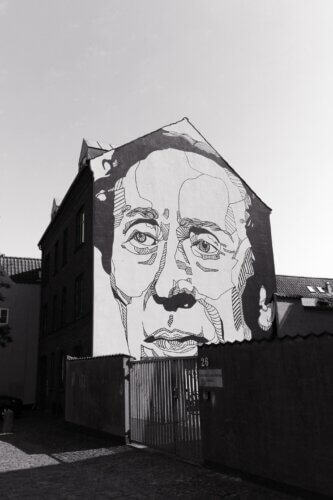
The city’s most famous personality is probably also Denmark’s most famous writer and omnipresent in Odense, for example in the “Andersen’s footprints” throughout the city. You can follow those and explore Odense in a unique way.
You will also find sculptures of Andersen or his works in many places, for example in the city centre and in the Fairytale Garden, where a Hans Christian Andersen parade takes place, as well as in several museums.
These include, for example, Andersen’s childhood home, where he lived from 1807 to 1819, and which has been a museum since 1930. It is dedicated to the poet’s childhood and exhibits, amongst other things, original manuscripts and diaries.
The highlight, however, is the Hans Christian Andersen House, a newly built museum in the historic district of Odense. The modern museum, which covers around 5,600 square metres, focuses primarily on Andersen’s works and fairy tales. The writer’s birthplace, a small yellow house in the historic city centre, where you can learn about Andersen’s life and work, is part of the museum complex as well.
Odense Zoo
Odense Zoo is recognised as one of the most beautiful zoos in Denmark. Since it opened in 1930, it has grown considerably and is now home to over 2,000 animals from all over the world. You can not only get very close to Danish (domestic) animals here, but also to animals from Africa, Asia, South America and the Antarctic. However, the zoo is particularly famous for its Ozeaneum.

The zoo is easily accessible by car, public transport and bicycle and provides a green oasis within the city, as it is located directly by the river Odense Å. Various guided tours and feeding sessions are part of the programme. Admission is 195 Danish kroner for adults and 100 DK for children between the ages of three and eleven.
Odense Open-Air Museum: The Fyn Village
Anyone interested in history and culture should make a detour to the open-air museum “Den Fynske Landsby“. In the lovingly designed museum complex, you can get to know the Funen of the past, focussing on the rural inhabitants of the island in the 1850s. The 25 historic houses and numerous artefacts create a lively atmosphere, as do the dressed-up showmen who go about their typical everyday tasks of the 19th century.
The museum is open from April to October. Admission for adults is 145 kroner, while underage visitors can enter free of charge.
Football in Odense: Odense BK
Sports fans, and football fans in particular, will be familiar with Odense from European competitions and test matches. Odense Boldklub is one of the better-known Danish clubs, having won the Danish championship three times and the Danish cup five times. The club plays its home games in the Nature Energy Arena, which has around 15,000 seats, and plays in the highest Danish league.
The successful coach Richard Møller Nielsen coached Odense BK between 1964 and 1967, as well as between 1975 and 1985, before taking over the Danish national team and leading them to win the European Championship in 1992.
Accommodation in Odense
Hotels in Odense
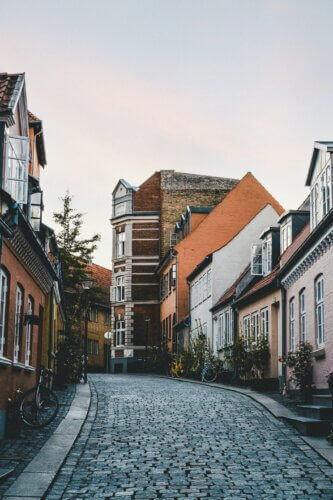
As a major Danish city and popular holiday destination, Odense has a wide range of hotels to offer. There is something for every budget, so that you should find the accommodation that suits you best, whether hostel, B&B or star hotel. Hotels have the advantage that they often are centrally located and, thus close to the train station, city centre, sights and often offer many extras.
Highlights in Odense include the Comwell H. C. Andersen, which is located just 500 metres from the train station and is furnished in the style of the city’s most famous son, or the Amalie Bed and Breakfast & Apartments, which offers reasonably priced rooms and a cosy garden in a quiet yet central location.
Campsites near Odense
Camping is a very popular way to go on holiday in Denmark. Camping holidays are uncomplicated, close to nature and inexpensiv. Most campsites are not only located by the water, but offer various types of accommodation and some services as well. There are several campsites on Funen, for example in Blommenslyst, which is about 9 kilometres from Odense.
Travelling to Odense
Travelling by car
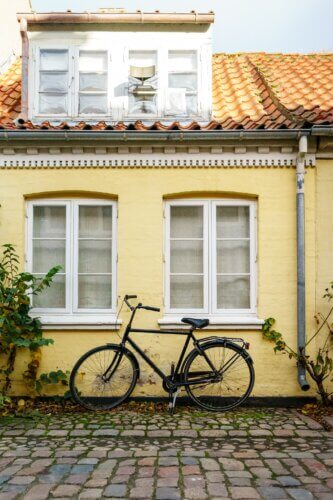
For travellers from Germany, getting to Odense is uncomplicated and easy. Thanks to its central location in Denmark and excellent connections to the European road network, the island city can be reached in just a few hours from northern Germany. Travellers can choose between the overland route, the “Lillebæltsbro”, the bridge between Jutland and Funen, or ferry connections.
In Odense itself, you can easily get around without a car. There are not only reintroduced tram projects, but also the pink, free city buses, which are a great way to explore and get to know the city. Further, Odense is a “Green City”, which means that cyclists have advantages here. Rental bikes can be hired quickly and easily.
Travelling by train
From Germany it is easy to reach Odense by train, as the Danish rail network is seamlessly connected to the German one. That means you can travel in comfort and get to know the Danish countryside from the train. There are several direct connections from Hamburg to Odense, which allow you to reach the Danish city in around 3 1/2 hours without changing trains.
Travelling by plane
Although Odense has its own airport, the Hans Christian Andersen Airport, it only provides seasonal flights. Travellers who want to travel comfortably by plane should instead head for Copenhagen, as the airport is well connected to the rest of Europe. Odense is easy to reach from Copenhagen, for example by train – there are several direct connections between Copenhagen Airport and the island city – or by a rental car.
